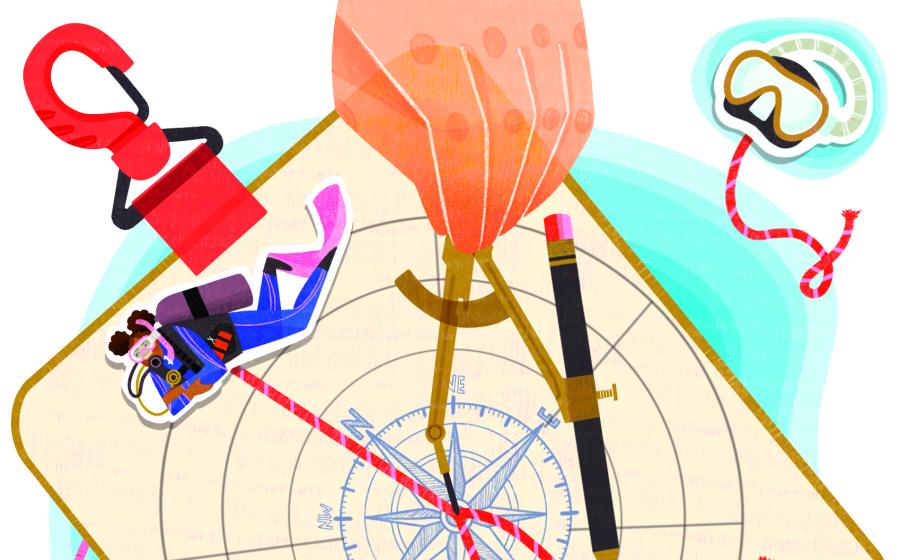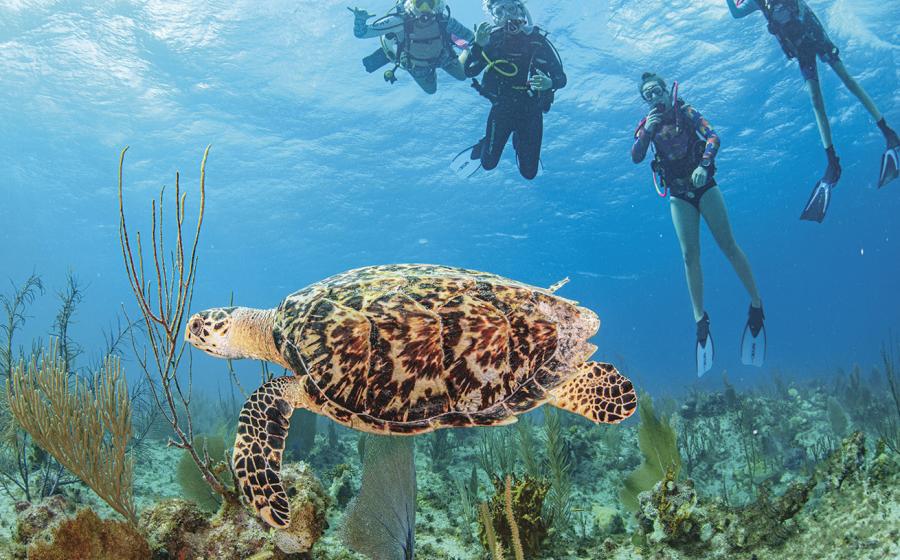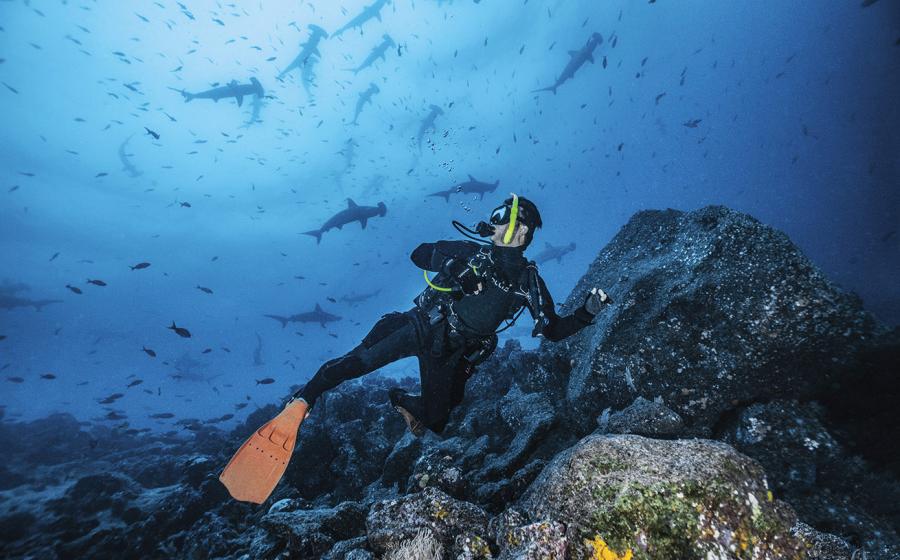Seahorses Under Pressure
What we can do to help save these unique creatures

| | Photo by Bill Harrigan_ Worth Saving - This long-snouted seahorse in St. Vincent is one of the many species Project Seahorse works to protect._|
Seahorses, which have enchanted humans for hundreds of years, are rapidly disappearing from the seas. The features that make them beautiful and unique have become contributing factors to their decline as they are harvested for medicinal uses and supposed magical powers. Their habitats seagrass meadows, coral reefs, estuaries and mangroves are among the most threatened marine areas in the world. While exact numbers are not available, approximately 75 countries worldwide are involved in the trade of an estimated 20 to 25 million seahorses each year. This is considered to be a conservative estimate as little information is available on this legal trade. The largest consumer of seahorses is China, where they are used in traditional medicine, which is recognized as a viable health-care option. It is believed that China alone imports 20 million seahorses each year. Seahorses are used to treat a wide range of ailments from asthma, impotence and lethargy to broken bones, heart disease and general pain, and they're also considered to be an aphrodisiac. None of these uses has any basis in science.
The Philippines, Thailand, Vietnam, Mexico and India are the world's largest exporters. Bleached and dried seahorses sold in China are worth more than silver and are quickly approaching gold in value. North America and Western Europe are large importers of live seahorses for the aquarium trade, though it is extremely difficult to keep seahorses alive for long, due to their strict dietary and environmental needs. Breeding in captivity is rare. The seahorse population is also depleted by their use in curios such as key chains, ornaments and charms.
| Seahorse Facts |
| 1. The largest seahorse is the Australian big-bellied seahorse, which measures 1 2 inches or more 2. The smallest is the pygmy seahorse, which is less than an inch long 3. The biggest batch of babies on record is 1,572, produced by a longsnout seahorse. (The number of young typically ranges from five to 1,500, depending on the size of the animal.) 4. The Knysna seahorse from South Africa is formally recognized as being endangered. All other species of seahorse are recognized as threatened. |
The number of seahorses being caught is dwindling, and fishermen in the Pacific are reporting up to a 70-percent decline in numbers over 10 years. Mexico and Brazil have reported a 75- to 95-percent decrease over the last 10 to 20 years. These startling figures make it clear that there is an immediate need to create a sustainable population. Drastic measures such as outlawing the trade altogether are unrealistic due to the large number of people in so many countries who rely on seahorses as their only means of income. Beginning in May 2004, new regulations set by the Convention on International Trade in Endangered Species of Wild Fauna and Flora were set in place for more than 160 countries. These regulations will require members to issue export permits as well as prove that the trade is not detrimental to the wild populations. Unfortunately, some countries have withdrawn from the convention over the sole issue of seahorses. It is hoped that these countries, three of which are large players in the seahorse trade, will reverse their decisions. While it may seem difficult to make a difference, there are several things divers can do to help ensure the survival of seahorses. Don't buy seahorses for home aquariums. Don't touch seahorses in the wild. Support locals who are looking for alternative means of living by doing such things as buying native artwork or crafts if they are not damaging to the environment. Continue to support wise management of seagrasses, mangroves, estuaries, and coral reefs, as seahorses need a healthy environment in order to thrive. Leading the international effort to give seahorses a sustainable future is Project Seahorse, a marine conservation organization based at the University of British Columbia. Check out www.projectseahorse.org. A long time sponsor of Project Seahorse is Guylian world famous for is Belgian chocolate seashells. Check out www.guylian.be
More Information
Top 10 Dive Destinations for Seahorses
[pagebreak] Top 10 Dive Destinations for Seahorses 1 Ria Formosa, Portugal While the conditions can be less inviting than most tropical locales, no place in the world boasts a higher density of seahorses. Two species, the long-snouted seahorse (Hippocampus guttulatus) and short-snouted seahorse (H. hippocampus) live among the seagrasses. 2 Bunaken, North Sulawesi, Indonesia Great for pygmy seahorses (at least three species) as well as the yellow seahorse (H. kuda), the hedgehog seahorse (H. spinosissimus) and the three-spot seahorse (H. trimaculatus). 3 Lembeh Strait, North Sulawesi, Indonesia Features spectacular black sand, plus good opportunities to view H. bargibanti and H. denise. 4 Cabilao Island, Bohol, Philippines Home to the yellow seahorse and thorny seahorse (H. histrix) as well as two pygmy seahorses (H. bargibanti and H. denise). 5 Bonaire, Netherlands Antilles Offers spectacular dive conditions, along with likely sightings of two Caribbean species, the lined seahorse (H. erectus) and the slender seahorse (H. reidi). 6 Port Phillip Bay, Victoria, Australia This is an easily accessible location underneath the piers at Rosebud, Rye or Seaford, where both the big-bellied (H. abdominalis) and the short-headed seahorse (H. breviceps) are common.
7 Malta Another excellent spot to find both North Atlantic species, the long- and short-snouted seahorses.
8 Kangaroo Island, South Australia The main attraction is not seahorses but their close relatives, the leafy and weedy seadragons (Phycodurus eques and Phyllopteryx taeniolatus, respectively). 9 Los Cabos, Baja California, Mexico Just one species, the Pacific seahorse (H. ingens) is found on the west coast of North America, and the islands off the southern tip of Baja offer some of the best chances of finding it. 10 Sydney Harbour, New South Wales, Australia It's not exactly pristine, but White's seahorse (H. whitei) and the big-bellied seahorse thrive here.
Project Seahorse encourages all divers to respect the underwater environment and avoid disturbing marine fauna and flora. Many seahorse populations are vulnerable to disturbance, and all are best approached with the help of a responsible and experienced guide.






